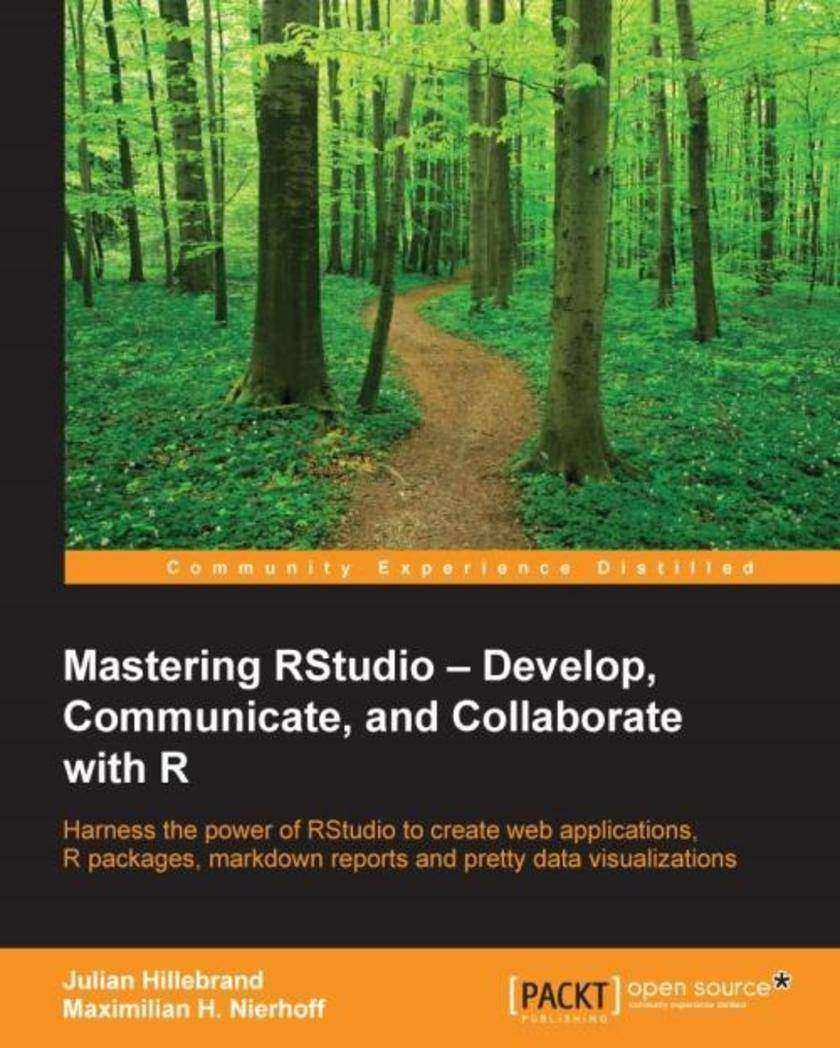
Mastering RStudio – Develop, Communicate, and Collaborate with R
¥90.46
Harness the power of RStudio to create web applications, R packages, markdown reports and pretty data visualizationsAbout This BookDiscover the multi-functional use of RStudio to support your daily work with R codeLearn to create stunning, meaningful, and interactive graphs and learn to embed them into easy communicable reports using multiple R packagesDevelop your own R packages and Shiny web apps to share your knowledge and collaborate with others.Who This Book Is ForThis book is aimed at R developers and analysts who wish to do R statistical development while taking advantage of RStudio’s functionality to ease their development efforts. R programming experience is assumed as well as being comfortable with R’s basic structures and a number of functions.What You Will LearnDiscover the RStudio IDE and details about the user interfaceCommunicate your insights with R Markdown in static and interactive waysLearn how to use different graphic systems to visualize your dataBuild interactive web applications with the Shiny framework to present and share your resultsUnderstand the process of package development and assemble your own R packagesEasily collaborate with other people on your projects by using Git and GitHubManage the R environment for your organization with RStudio and Shiny serverApply your obtained knowledge about RStudio and R development to create a real-world dashboard solutionIn DetailRStudio helps you to manage small to large projects by giving you a multi-functional integrated development environment, combined with the power and flexibility of the R programming language, which is becoming the bridge language of data science for developers and analyst worldwide. Mastering the use of RStudio will help you to solve real-world data problems.This book begins by guiding you through the installation of RStudio and explaining the user interface step by step. From there, the next logical step is to use this knowledge to improve your data analysis workflow. We will do this by building up our toolbox to create interactive reports and graphs or even web applications with Shiny. To collaborate with others, we will explore how to use Git and GitHub with RStudio and how to build your own packages to ensure top quality results. Finally, we put it all together in an interactive dashboard written with R.Style and approachAn easy-to-follow guide full of hands-on examples to master RStudio.Beginning from explaining the basics, each topic is explained with a lot of details for every feature.
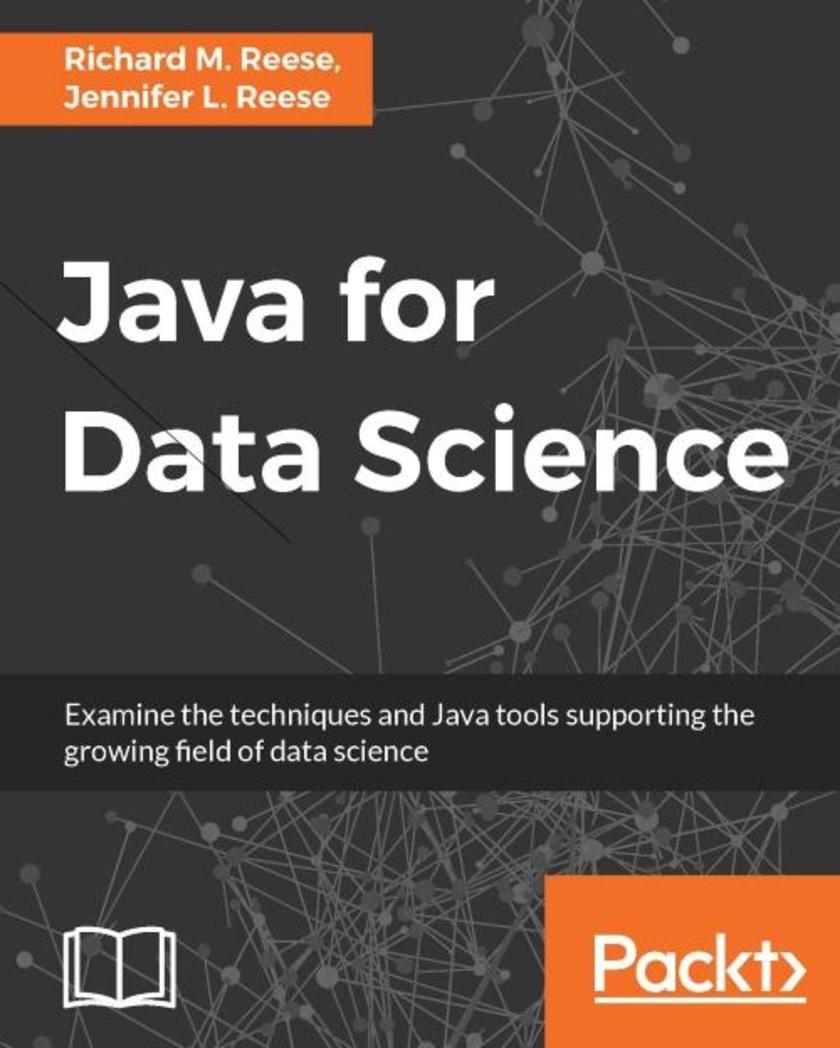
Java for Data Science
¥90.46
Examine the techniques and Java tools supporting the growing field of data science About This Book Your entry ticket to the world of data science with the stability and power of Java Explore, analyse, and visualize your data effectively using easy-to-follow examples Make your Java applications more capable using machine learning Who This Book Is For This book is for Java developers who are comfortable developing applications in Java. Those who now want to enter the world of data science or wish to build intelligent applications will find this book ideal. Aspiring data scientists will also find this book very helpful. What You Will Learn Understand the nature and key concepts used in the field of data science Grasp how data is collected, cleaned, and processed Become comfortable with key data analysis techniques See specialized analysis techniques centered on machine learning Master the effective visualization of your data Work with the Java APIs and techniques used to perform data analysis In Detail Data science is concerned with extracting knowledge and insights from a wide variety of data sources to analyse patterns or predict future behaviour. It draws from a wide array of disciplines including statistics, computer science, mathematics, machine learning, and data mining. In this book, we cover the important data science concepts and how they are supported by Java, as well as the often statistically challenging techniques, to provide you with an understanding of their purpose and application. The book starts with an introduction of data science, followed by the basic data science tasks of data collection, data cleaning, data analysis, and data visualization. This is followed by a discussion of statistical techniques and more advanced topics including machine learning, neural networks, and deep learning. The next section examines the major categories of data analysis including text, visual, and audio data, followed by a discussion of resources that support parallel implementation. The final chapter illustrates an in-depth data science problem and provides a comprehensive, Java-based solution. Due to the nature of the topic, simple examples of techniques are presented early followed by a more detailed treatment later in the book. This permits a more natural introduction to the techniques and concepts presented in the book. Style and approach This book follows a tutorial approach, providing examples of each of the major concepts covered. With a step-by-step instructional style, this book covers various facets of data science and will get you up and running quickly.
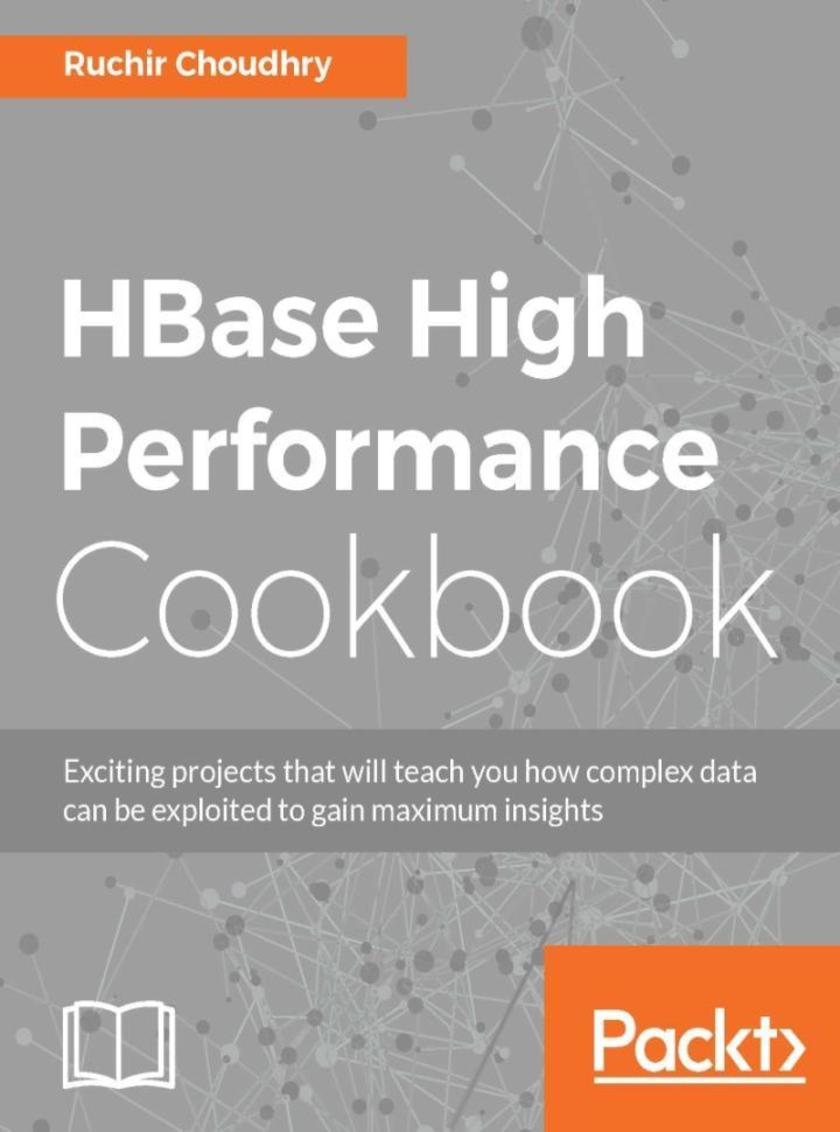
HBase High Performance Cookbook
¥90.46
Exciting projects that will teach you how complex data can be exploited to gain maximum insights About This Book Architect a good HBase cluster for a very large distributed system Get to grips with the concepts of performance tuning with HBase A practical guide full of engaging recipes and attractive screenshots to enhance your system’s performance Who This Book Is For This book is intended for developers and architects who want to know all about HBase at a hands-on level. This book is also for big data enthusiasts and database developers who have worked with other NoSQL databases and now want to explore HBase as another futuristic scalable database solution in the big data space. What You Will Learn Configure HBase from a high performance perspective Grab data from various RDBMS/Flat files into the HBASE systems Understand table design and perform CRUD operations Find out how the communication between the client and server happens in HBase Grasp when to use and avoid MapReduce and how to perform various tasks with it Get to know the concepts of scaling with HBase through practical examples Set up Hbase in the Cloud for a small scale environment Integrate HBase with other tools including ElasticSearch In Detail Apache HBase is a non-relational NoSQL database management system that runs on top of HDFS. It is an open source, disturbed, versioned, column-oriented store and is written in Java to provide random real-time access to big Data. We’ll start off by ensuring you have a solid understanding the basics of HBase, followed by giving you a thorough explanation of architecting a HBase cluster as per our project specifications. Next, we will explore the scalable structure of tables and we will be able to communicate with the HBase client. After this, we’ll show you the intricacies of MapReduce and the art of performance tuning with HBase. Following this, we’ll explain the concepts pertaining to scaling with HBase. Finally, you will get an understanding of how to integrate HBase with other tools such as ElasticSearch. By the end of this book, you will have learned enough to exploit HBase for boost system performance. Style and approach This book is intended for software quality assurance/testing professionals, software project managers, or software developers with prior experience in using Selenium and Java to test web-based applications. This books also provides examples for C#, Python, and Ruby users.
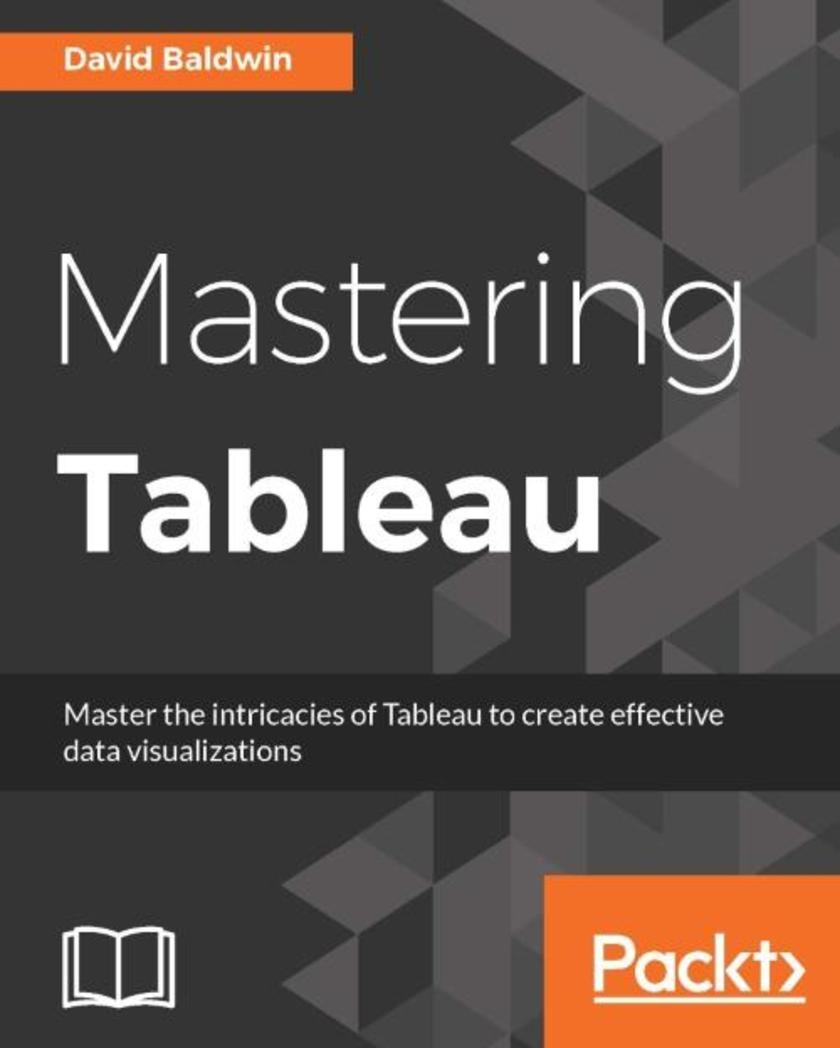
Mastering Tableau
¥90.46
Master the intricacies of Tableau to create effective data visualizations About This Book Arm yourself with an arsenal of advanced chart types and geocoding to efficiently and engagingly present information Map a grid over a network node diagram and use that grid to demonstrate loads, processing time, and more in Tableau Integrate R with Tableau by utilizing R functions, libraries, and saved models Who This Book Is For If you are a business analyst without developer-level programming skills, then this book is for you. You are expected to have at least a fundamental understanding of Tableau and basic knowledge of joins, however SQL knowledge is not assumed. You should have basic computer skills, including at least moderate Excel proficiency. What You Will Learn Create a worksheet that can display the current balance for any given period in time Recreate a star schema from in a data warehouse in Tableau Combine level of detail calculations with table calculations, sets, and parameters Create custom polygons to build filled maps for area codes in the USA Visualize data using a set of analytical and advanced charting techniques Know when to use Tableau instead of PowerPoint Build a dashboard and export it to PowerPoint In Detail Tableau has emerged as one of the most popular Business Intelligence solutions in recent times, thanks to its powerful and interactive data visualization capabilities. This book will empower you to become a master in Tableau by exploiting the many new features introduced in Tableau 10.0. You will embark on this exciting journey by getting to know the valuable methods of utilizing advanced calculations to solve complex problems. These techniques include creative use of different types of calculations such as row-level, aggregate-level, and more. You will discover how almost any data visualization challenge can be met in Tableau by getting a proper understanding of the tool’s inner workings and creatively exploring possibilities. You’ll be armed with an arsenal of advanced chart types and techniques to enable you to efficiently and engagingly present information to a variety of audiences through the use of clear, efficient, and engaging dashboards. Explanations and examples of efficient and inefficient visualization techniques, well-designed and poorly designed dashboards, and compromise options when Tableau consumers will not embrace data visualization will build on your understanding of Tableau and how to use it efficiently. By the end of the book, you will be equipped with all the information you need to create effective dashboards and data visualization solutions using Tableau. Style and approach This book takes a direct approach, to systematically evolve to more involved functionalities such as advanced calculation, parameters & sets, data blending and R integration. This book will help you gain skill in building visualizations previously beyond your capacity.
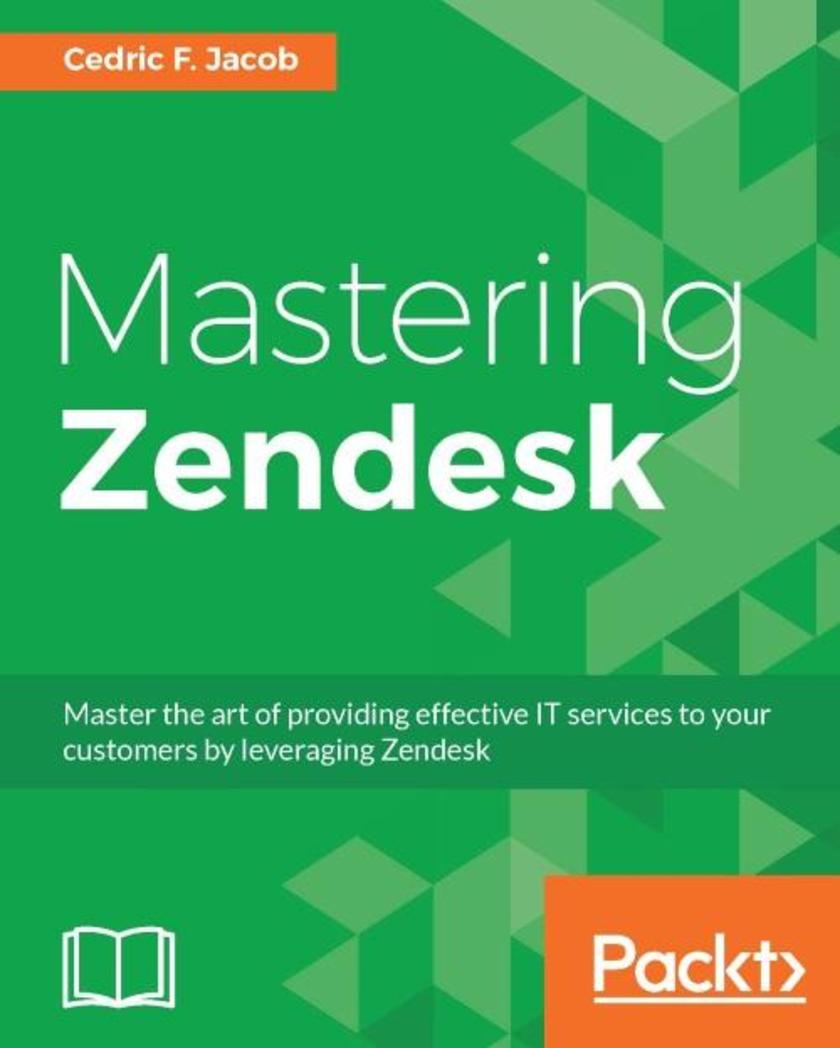
Mastering Zendesk
¥90.46
Master the art of providing effective IT services to your customers by leveraging Zendesk About This Book Deep dive into the functionalities of Zendesk and improve your organization's customer services Learn how to expand the capabilities of Zendesk by integrating and extending it with third-party tools A master level guide that manages tickets, channels, and workflows along with advanced security features Who This Book Is For This book is for proficient Zendesk administrators who want to unlock the full potential of their Zendesk environment by gaining a deeper understanding of Zendesk's advanced customization options. What You Will Learn Customize ticket channels such as Email, Twitter, Facebook, and Web-Widget Add business rules to create a more effective and automated Zendesk environment Use Zendesk apps to add more functionality to the Zendesk setup Extend Zendesk with JIRA and Salesforce Create custom metrics within GoodData in order to set up customized and automated reports Learn how to secure and troubleshoot Zendesk In Detail Zendesk is a cloud-based customer service solution that is widely used because it is easy, efficienct, flexible, and low cost. It is highly scalable and is great for organizations of all sizes. If you're a Zendesk administrator and are looking to explore advanced-level concepts, then this book is for you. It covers the core functionalities such as managing users, groups, and the organization, and creating and adding custom fields. You will learn how to add customized ticket channels to your account. Then, you will focus on customizing business rules and extending Zendesk with JIRA and Salesforce. Towards the end, the book emphasizes security and troubleshooting aspects as well as providing tips and tricks to create a more efficient support environment. By the end of this book, you will be able to turn a basic Zendesk setup into a highly customized working environment. Style and approach This advanced guide provides easy to understand examples to ensure you gain expertise with Zendesk.
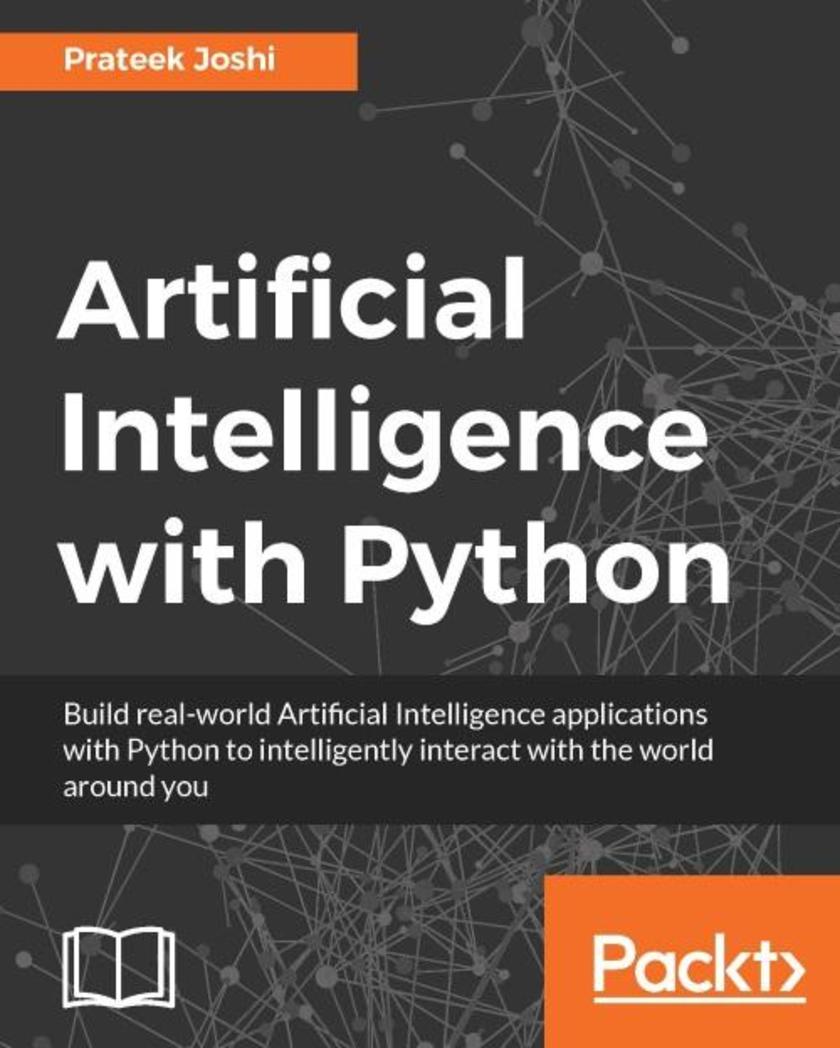
Artificial Intelligence with Python
¥90.46
Build real-world Artificial Intelligence applications with Python to intelligently interact with the world around you About This Book Step into the amazing world of intelligent apps using this comprehensive guide Enter the world of Artificial Intelligence, explore it, and create your own applications Work through simple yet insightful examples that will get you up and running with Artificial Intelligence in no time Who This Book Is For This book is for Python developers who want to build real-world Artificial Intelligence applications. This book is friendly to Python beginners, but being familiar with Python would be useful to play around with the code. It will also be useful for experienced Python programmers who are looking to use Artificial Intelligence techniques in their existing technology stacks. What You Will Learn Realize different classification and regression techniques Understand the concept of clustering and how to use it to automatically segment data See how to build an intelligent recommender system Understand logic programming and how to use it Build automatic speech recognition systems Understand the basics of heuristic search and genetic programming Develop games using Artificial Intelligence Learn how reinforcement learning works Discover how to build intelligent applications centered on images, text, and time series data See how to use deep learning algorithms and build applications based on it In Detail Artificial Intelligence is becoming increasingly relevant in the modern world where everything is driven by technology and data. It is used extensively across many fields such as search engines, image recognition, robotics, finance, and so on. We will explore various real-world scenarios in this book and you’ll learn about various algorithms that can be used to build Artificial Intelligence applications. During the course of this book, you will find out how to make informed decisions about what algorithms to use in a given context. Starting from the basics of Artificial Intelligence, you will learn how to develop various building blocks using different data mining techniques. You will see how to implement different algorithms to get the best possible results, and will understand how to apply them to real-world scenarios. If you want to add an intelligence layer to any application that’s based on images, text, stock market, or some other form of data, this exciting book on Artificial Intelligence will definitely be your guide! Style and approach This highly practical book will show you how to implement Artificial Intelligence. The book provides multiple examples enabling you to create smart applications to meet the needs of your organization. In every chapter, we explain an algorithm, implement it, and then build a smart application.
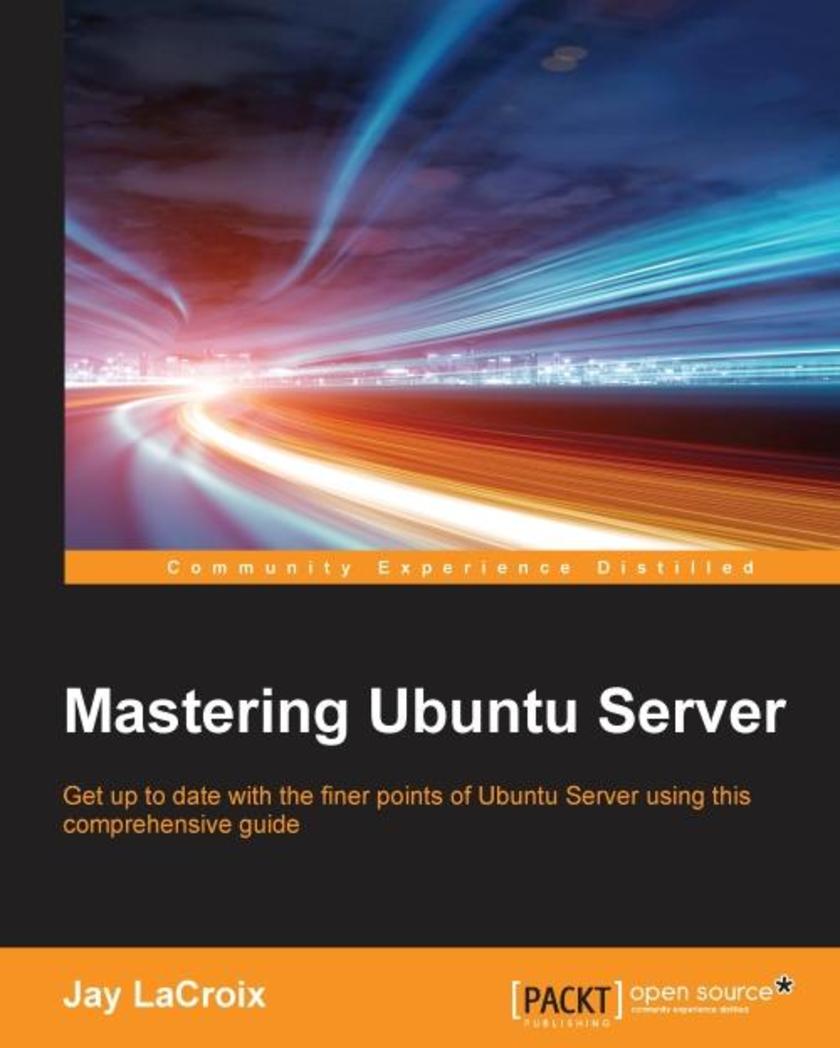
Mastering Ubuntu Server
¥90.46
Get up to date with the finer points of Ubuntu Server using this comprehensive guide About This Book Get well-versed with newly-added features in Ubuntu 16.04 Master the art of installing, managing, and troubleshooting Ubuntu Server A practical easy-to-understand book that will help you enhance your existing skills. Who This Book Is For This book is intended for readers with intermediate or advanced-beginner skills with Linux, who would like to learn all about setting up servers with Ubuntu Server. This book assumes that the reader knows the basics of Linux, such as editing configuration files and running basic commands. What You Will Learn Learn how to manage users, groups, and permissions Encrypt and decrypt disks with Linux Unified Key Setup /Luks Setup SSH for remote access, and connect it to other nodes Understand how to add, remove, and search for packages Use NFS and Samba to share directories with other users Get to know techniques for managing Apache and MariaDB Explore best practices and troubleshooting techniques In Detail Ubuntu is a Debian-based Linux operating system, and has various versions targeted at servers, desktops, phones, tablets and televisions. The Ubuntu Server Edition, also called Ubuntu Server, offers support for several common configurations, and also simplifies common Linux server deployment processes. With this book as their guide, readers will be able to configure and deploy Ubuntu Servers using Ubuntu Server 16.04, with all the skills necessary to manage real servers. The book begins with the concept of user management, group management, as well as file-system permissions. To manage your storage on Ubuntu Server systems, you will learn how to add and format storage and view disk usage. Later, you will also learn how to configure network interfaces, manage IP addresses, deploy Network Manager in order to connect to networks, and manage network interfaces. Furthermore, you will understand how to start and stop services so that you can manage running processes on Linux servers. The book will then demonstrate how to access and share files to or from Ubuntu Servers. You will learn how to create and manage databases using MariaDB and share web content with Apache. To virtualize hosts and applications, you will be shown how to set up KVM/Qemu and Docker and manage virtual machines with virt-manager. Lastly, you will explore best practices and troubleshooting techniques when working with Ubuntu Servers. By the end of the book, you will be an expert Ubuntu Server user well-versed in its advanced concepts. Style and Approach This book is an advanced guide that will show readers how to administer, manage, and deploy Ubuntu server and will also provide expert-level knowledge on advanced security and backup techniques.

C# Programming Cookbook
¥90.46
Quick fixes to your common C# programming problems, with a focus on C# 6.0 About This Book Unique recipes for C#, that places it in its real-world context. You will be able to get yourself out of any coding-corner youve backed yourself into. All code samples available through GitHub to bring C#. In line with modern development workflows, written to the latest specification of C# 6.0. Who This Book Is For The book is aimed at developers who have basic familiarity with C# programming and will know the VS 2015 environment. What You Will Learn Write better and less code to achieve the same result as in previous versions of C#. Generate tests from the Code Contracts for mission critical methods. Integrate code in Visual Studio with GitHub. Create a web application in Azure. Design and build a microservice architecture Demystify the Rx library using Reactive extensions Write high performing codes in C# and understanding multi-threading. Security and Debugging. Implement Code Contracts on code in Visual Studio. In Detail During your application development workflow, there is always a moment when you need to get out of a tight spot. Through a recipe-based approach, this book will help you overcome common programming problems and get your applications ready to face the modern world. We start with C# 6, giving you hands-on experience with the new language features. Next, we work through the tasks that you perform on a daily basis such as working with strings, generics, and lots more. Gradually, we move on to more advanced topics such as the concept of object-oriented programming, asynchronous programming, reactive extensions, and code contracts. You will learn responsive high performance programming in C# and how to create applications with Azure. Next, we will review the choices available when choosing a source control solution. At the end of the book, we will show you how to create secure and robust code, and will help you ramp up your skills when using the new version of C# 6 and Visual Studio Style and Approach Unique recipe-based guide that will help you gain a solid understanding of the new concepts in C# 6 and Visual Studio Enterprise 2015 in a concise and technically correct manner.
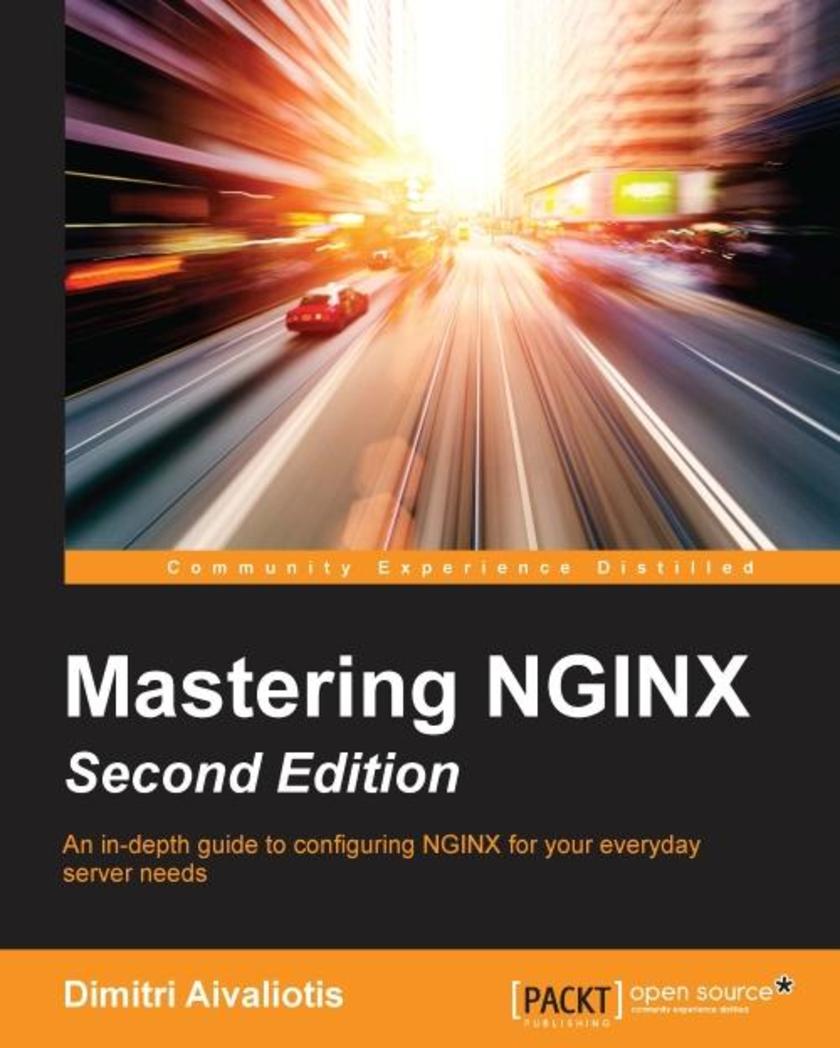
Mastering NGINX - Second Edition
¥90.46
An in-depth guide to configuring NGINX for your everyday server needs About This Book Get tips, tricks, and master insight to help you configure NGINX for any server situation Integrate NGINX into your applications architecture with is, using hands-on guidance and practical code samples that are free to use Troubleshoot configuration problems before and as they arise, for a seamless NGINX server experience Who This Book Is For This book is for system administrators and engineers who want to personalize NGINX, and design a robust configuration module to solve their hosting problems. Some knowledge of NGINX is a plus, but is not a prerequisite. What You Will Learn Compile the right third-party module to meet your needs Write an authentication server to use with the mail proxy module Create your own SSL certificates to encrypt connections Use try_files to solve your file-existence check problems Cache and compress responses to get speedier user interaction Integrate popular PHP frameworks with the FastCGI module Construct useful logging configurations In Detail NGINX is a high-performance HTTP server and mail proxy designed to use very few system resources. But despite its power it is often a challenge to properly configure NGINX to meet your expectations. Mastering Nginx is the solution – an insider’s guide that will clarify the murky waters of NGINX’s configuration. Tune NGINX for various situations, improve your NGINX experience with some of the more obscure configuration directives, and discover how to design and personalize a configuration to match your needs. To begin with, quickly brush up on installing and setting up the NGINX server on the OS and its integration with third-party modules. From here, move on to explain NGINX's mail proxy module and its authentication, and reverse proxy to solve scaling issues. Then see how to integrate NGINX with your applications to perform tasks. The latter part of the book focuses on working through techniques to solve common web issues and the know-hows using NGINX modules. Finally, we will also explore different configurations that will help you troubleshoot NGINX server and assist with performance tuning. Style and approach This is a mastering guide where you will follow an instructional, conversational approach working through problems and their solutions.

Unreal Engine 4.X By Example
¥90.46
An example-based practical guide to get you up and running with Unreal Engine 4.X About This Book A unique resource on Unreal with an interactive example based approach that is sure to get you up and running immediately Will feature four unique game projects that increase in complexity which will enable readers to build their game development skills using Unreal Engine 4 and the C++ programming language Will be the most up to date book in the market on Unreal with full coverage of the new features of UE4 Who This Book Is For Unreal Engine 4.X by Example was written for keen developers who wish to learn how to fully utilise Unreal Engine 4 to make awesome and engrossing game titles. Whether you are brand new to game development or a seasoned expert, you will be able to make use of the engine with C++. Experience with both C++ and other game engines is preferred before embarking on the Unreal by Example journey, but with a little external research into the basics of C++ programming, this book can take a complete game development novice to an Unreal Engine Developer! What You Will Learn Use C++ with Unreal Engine to boost the development potential of any Unreal Engine project Vastly improve workflow and content creation with the visual *ing system blueprint Design, test, and implement interesting game worlds using Unreal Engines built-in editor Build a networked, feature-rich first person shooter that you can play with others over LAN Build design-centric game worlds that play to needs of your game ideas Paint your game worlds via the creation and modification of visual shaders called materials Gain knowledge of other game development disciplines through the use of the Animation and Material tool sets Create feature-rich game projects with a sophisticated visual quality and feature set In Detail With Unreal Engine 4 being made free to use, for any keen game developer it is quickly becoming the most popular game engine in today’s development industry. The engine offers a rich feature set that can be customized and built upon through the use of C++. This book will cover how to work with Unreal Engine’s tool set all the way from the basics of the editor and the visual *ing system blueprint to the in-depth low-level creation of content using C++. This book will provide you with the skills you need to create feature-rich, captivating, and refined game titles with Unreal Engine 4. This book will take you through the creation of four unique game projects, designed so that you will be ready to apply the engine’s rich development capabilities. You will learn not only to take advantage of the visual tools of the engine, but also the vast and powerful programming feature set of Unreal Engine 4. Style and approach The best resource that any beginner level game developer can dream of with examples on leveraging the amazing graphics engine, beautiful character animation and game world generations etc. by means of exciting real world game generation.This book would be a very unique resource for any game developer who wants to get up and running with Unreal. The unique example-driven approach will take you through the most basic games towards the more complex ones and will gradually build your skill level.
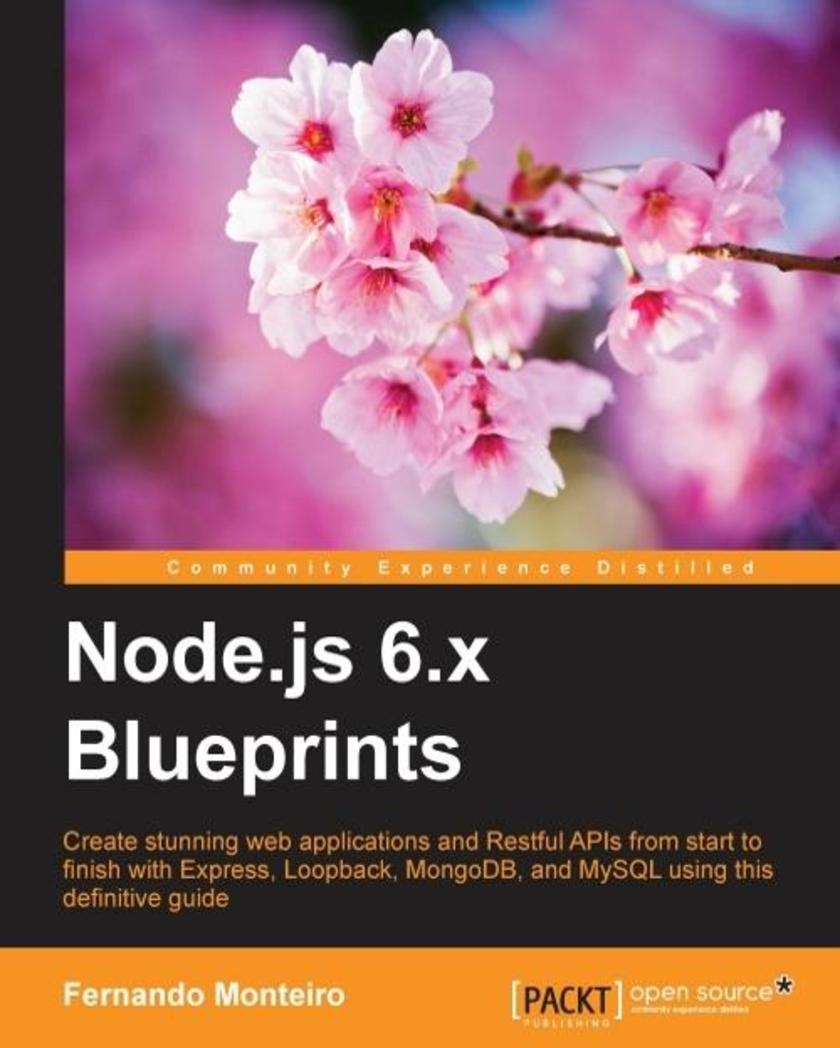
Node.js 6.x Blueprints
¥90.46
Create stunning web applications and Restful APIs from start to finish with Express, Loopback, MongoDB, and MySQL using this definitive guide About This Book Create stunning applications with Node.js from scratch, no matter the goal Discover a wide variety of applications you can effectively integrate third-party libraries and other front-end frameworks with Node.js Leverage all the new features introduced in Node.js 6.X Who This Book Is For This book caters to developers who are looking to build projects right from a simple website to more complex one such as a blog, chat application, a photography site, and a lot more. A Basic knowledge of JavaScript and Node.js would be extremely beneficial. What You Will Learn Explore MVC design pattern in Node.js Build solid architectures by following test-driven development Look beyond web applications and create your own desktop app with Node.js Develop single page applications using Node.js with the RESTful APIs, MongoDB, and ORM Master the Express framework and build a complete application with a real database Create a real-time and fully functional online chat application with Socket.IO In Detail Node.js is the most popular framework to create server-side applications today. Be it web, desktop, or mobile, Node.js comes to your rescue to create stunning real-time applications. Node.js 6.x Blueprints will teach you to build these types of projects in an easy-to-understand manner. The key to any Node.js project is a strong foundation on the concepts that will be a part of every project. The book will first teach you the MVC design pattern while developing a Twitter-like application using Express.js. In the next chapters, you will learn to create a website and applications such as streaming, photography, and a store locator using MongoDB, MySQL, and Firebase. Once you’re warmed up, we’ll move on to more complex projects such as a consumer feedback app, a real-time chat app, and a blog using Node.js with frameworks such as loopback.io and socket.io. Finally, we’ll explore front-end build processes, Docker, and continuous delivery. By the end of book, you will be comfortable working with Node.js applications and will know the best tools and frameworks to build highly scalable desktop and cloud applications. Style and approach This is an easy-to-follow guide full of practical examples. This book takes a project-based approach and each chapter contains step-by-step instructions to create stunning applications across different application domains from scratch.
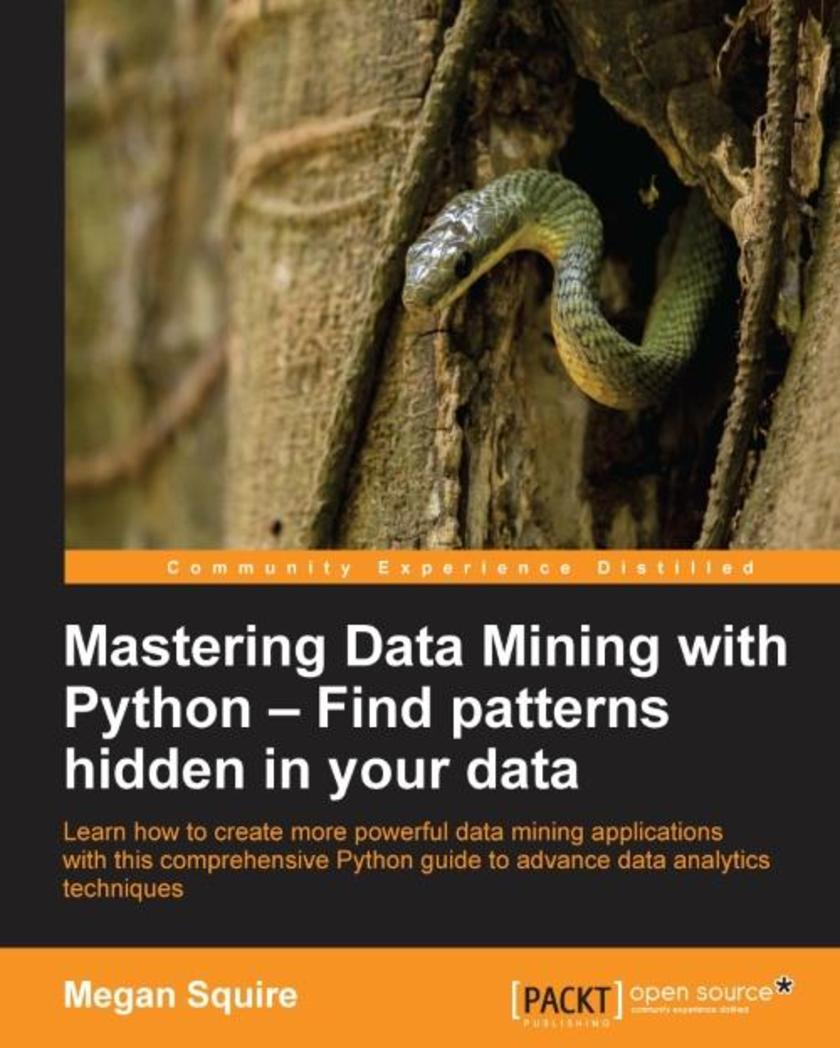
Mastering Data Mining with Python – Find patterns hidden in your data
¥90.46
Learn how to create more powerful data mining applications with this comprehensive Python guide to advance data analytics techniques About This Book Dive deeper into data mining with Python – don’t be complacent, sharpen your skills! From the most common elements of data mining to cutting-edge techniques, we’ve got you covered for any data-related challenge Become a more fluent and confident Python data-analyst, in full control of its extensive range of libraries Who This Book Is For This book is for data scientists who are already familiar with some basic data mining techniques such as SQL and machine learning, and who are comfortable with Python. If you are ready to learn some more advanced techniques in data mining in order to become a data mining expert, this is the book for you! What You Will Learn Explore techniques for finding frequent itemsets and association rules in large data sets Learn identification methods for entity matches across many different types of data Identify the basics of network mining and how to apply it to real-world data sets Discover methods for detecting the sentiment of text and for locating named entities in text Observe multiple techniques for automatically extracting summaries and generating topic models for text See how to use data mining to fix data anomalies and how to use machine learning to identify outliers in a data set In Detail Data mining is an integral part of the data science pipeline. It is the foundation of any successful data-driven strategy – without it, you'll never be able to uncover truly transformative insights. Since data is vital to just about every modern organization, it is worth taking the next step to unlock even greater value and more meaningful understanding. If you already know the fundamentals of data mining with Python, you are now ready to experiment with more interesting, advanced data analytics techniques using Python's easy-to-use interface and extensive range of libraries. In this book, you'll go deeper into many often overlooked areas of data mining, including association rule mining, entity matching, network mining, sentiment analysis, named entity recognition, text summarization, topic modeling, and anomaly detection. For each data mining technique, we'll review the state-of-the-art and current best practices before comparing a wide variety of strategies for solving each problem. We will then implement example solutions using real-world data from the domain of software engineering, and we will spend time learning how to understand and interpret the results we get. By the end of this book, you will have solid experience implementing some of the most interesting and relevant data mining techniques available today, and you will have achieved a greater fluency in the important field of Python data analytics. Style and approach This book will teach you the intricacies in applying data mining using real-world scenarios and will act as a very practical solution to your data mining needs.

PHP 7 Programming Cookbook
¥90.46
Over 80 recipes that will take your PHP 7 web development skills to the next level! About This Book This is the most up-to-date book in the market on PHP It covers the new features of version 7.x, best practices for server-side programming, and MVC frameworks The recipe-based approach will allow you to explore the unique capabilities that PHP offers to web programmers Who This Book Is For If you are an aspiring web developer, mobile developer, or backend programmer, then this book is for you as it will take your PHP programming skills to next level. Basic knowledge of PHP programming is assumed. What You Will Learn Use advanced PHP 7 features, such as the Abstract Syntax Tree, Uniform Variable Syntax, Scalar Type Hints, Generator Delegation, Anonymous Classes, and the Context Sensitive Lexer Discover where and when PHP 5 code needs to be re-written to avoid backwards-compatibility breaks Improve the overall application security and error handling by taking advantage of classes that implement the new throwable interface Solve practical real-world programming problems using PHP 7 Develop middle-wareclasses that allow PHP developers to gluedifferent open source libraries together seamlessly Define and Implement PSR-7 classes Create custom middleware using PSR-7 compliant classes Test and debug your code, and get to know the best practices In Detail PHP 7 comes with a myriad of new features and great tools to optimize your code and make your code perform faster than in previous versions. Most importantly, it allows you to maintain high traffic on your websites with low-cost hardware and servers through a multithreading web server. This book demonstrates intermediate to advanced PHP techniques with a focus on PHP 7. Each recipe is designed to solve practical, real-world problems faced by PHP developers like yourself every day. We also cover new ways of writing PHP code made possible only in version 7. In addition, we discuss backward-compatibility breaks and give you plenty of guidance on when and where PHP 5 code needs to be changed to produce the correct results when running under PHP 7. This book also incorporates the latest PHP 7.x features. By the end of the book, you will be equipped with the tools and skills required to deliver efficient applications for your websites and enterprises. Style and approach This book takes a recipe-based approach, with real-world examples that can serve as building blocks for a larger application. Each recipe is self-contained with no external dependencies. This book follows a problem-solution strategy so you understand how to deal with various scenarios you may encounter while using PHP 7 in your daily activities.
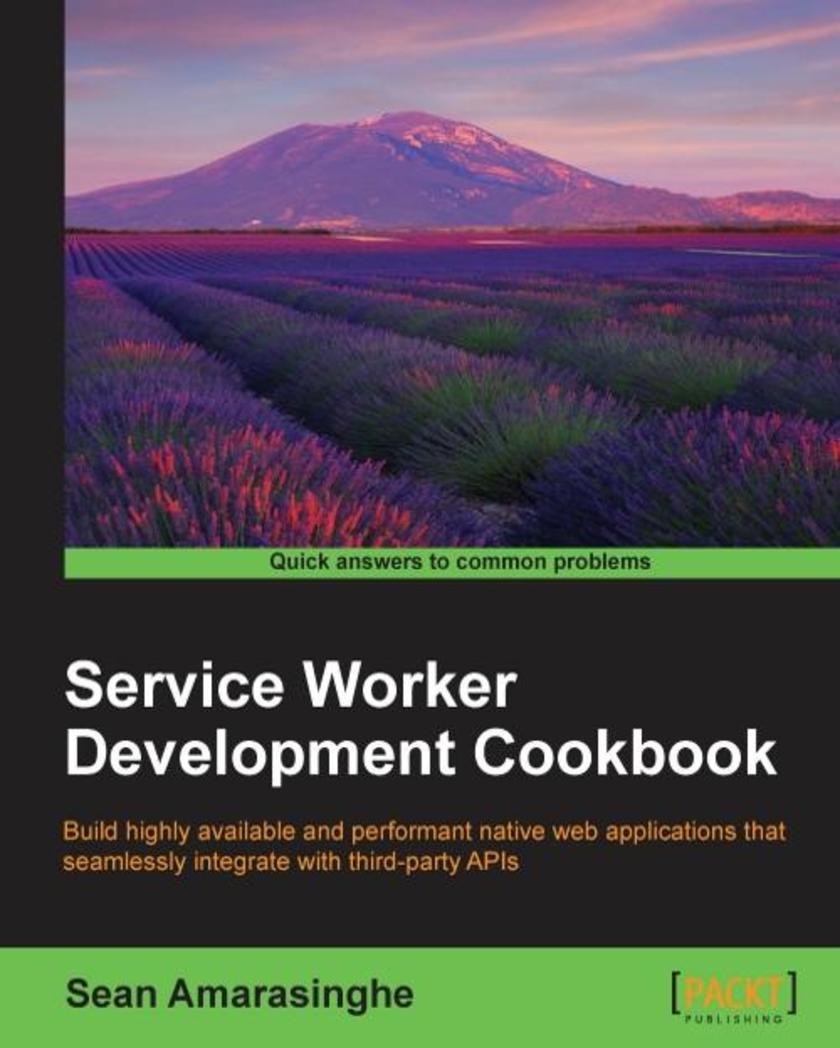
Service Worker Development Cookbook
¥90.46
Build highly available and performant native web applications that seamlessly integrate with third-party APIs About This Book Get straight into the action with step-by-step recipes that show you how to put Service Workers to work Find out what Service Workers can do for your app, then do it! Get the first in-depth look at this important new feature for web developers Who This Book Is For Web developers, mobile application developers, and software engineers with any level of knowledge can use this book. You should be familiar with JavaScript and HTML. What You Will Learn Display a custom offline page Cache critical resources for offline use Implement offline Google Analytics Get network responses offline Implement push notifications Improve performance of your app In Detail It would be nice to have web apps that work offline and send push notifications. This is now possible with Service Workers, which can add native-like functionality to your web apps without requiring a download. This book will get your mobile and web apps functioning without Internet connectivity, improve performance and network interaction in order to increase the level of availability, and show you how to build performant applications that seamlessly integrate with third-party APIs. We’ll show you how to add Service Worker functionality to web apps and sites, access offline content through basic and advanced techniques, and build powerful interactive system notifications. We’ll also teach you about cache functionality and assets to provide immediate load even over narrow connections. We conclude by giving you various tips to improve app performance, including the background sync technique. By the end of this book, you’ll know build high performing and faster web and mobile applications with Service Workers. Style and approach This book provides lots of task-oriented, practical, and inspiring ways to put Service Workers to work. Step-by-step instructions will guide you through every task.
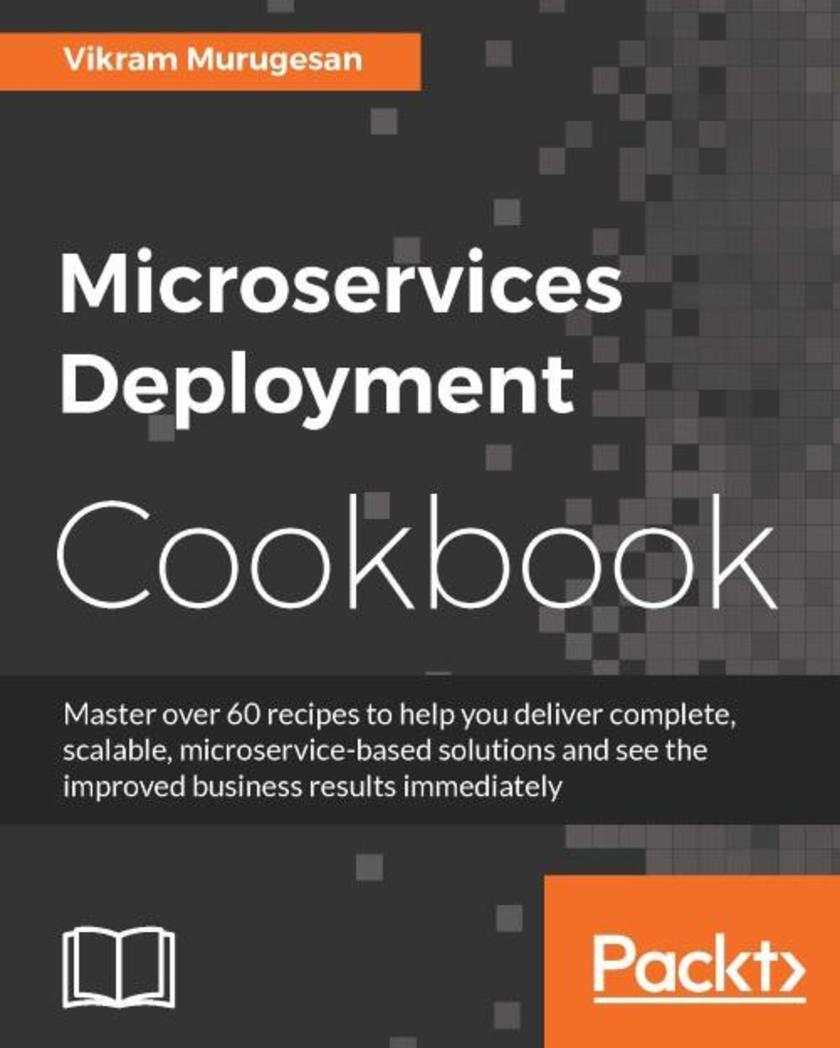
Microservices Deployment Cookbook
¥90.46
Master over 60 recipes to help you deliver complete, scalable, microservice-based solutions and see the improved business results immediately About This Book Adopt microservices-based architecture and deploy it at scale Build your complete microservice architecture using different recipes for different solutions Identify specific tools for specific scenarios and deliver immediate business results, correlate use cases, and adopt them in your team and organization Who This Book Is For This book is for developers, ops, and DevOps professionals who would like to put microservices to work and improve products, services, and operations. Those looking to build and deploy microservices will find this book useful, as well as managers and people at CXO level looking to adopt microservices in their organization. Prior knowledge of Java is expected. No prior knowledge of microservices is assumed. What You Will Learn Build microservices using Spring Boot, Wildfly Swarm, Dropwizard, and SparkJava Containerize your microservice using Docker Deploy microservices using Mesos/Marathon and Kubernetes Implement service discovery and load balancing using Zookeeper, Consul, and Nginx Monitor microservices using Graphite and Grafana Write stream programs with Kafka Streams and Spark Aggregate and manage logs using Kafka Get introduced to DC/OS, Docker Swarm, and YARN In Detail This book will help any team or organization understand, deploy, and manage microservices at scale. It is driven by a sample application, helping you gradually build a complete microservice-based ecosystem. Rather than just focusing on writing a microservice, this book addresses various other microservice-related solutions: deployments, clustering, load balancing, logging, streaming, and monitoring. The initial chapters offer insights into how web and enterprise apps can be migrated to scalable microservices. Moving on, you’ll see how to Dockerize your application so that it is ready to be shipped and deployed. We will look at how to deploy microservices on Mesos and Marathon and will also deploy microservices on Kubernetes. Next, you will implement service discovery and load balancing for your microservices. We’ll also show you how to build asynchronous streaming systems using Kafka Streams and Apache Spark. Finally, we wind up by aggregating your logs in Kafka, creating your own metrics, and monitoring the metrics for the microservice. Style and approach This book follows a recipe-driven approach and shows you how to plug and play with all the various pieces, putting them together to build a complete scalable microservice ecosystem. You do not need to study the chapters in order, as you can directly refer to the content you need for your situation.

Infrastructure as Code (IAC) Cookbook
¥90.46
Over 90 practical, actionable recipes to automate, test, and manage your infrastructure quickly and effectively About This Book Bring down your delivery timeline from days to hours by treating your server configurations and VMs as code, just like you would with software code. Take your existing knowledge and skill set with your existing tools (Puppet, Chef, or Docker) to the next level and solve IT infrastructure challenges. Use practical recipes to use code to provision and deploy servers and applications and have greater control of your infrastructure. Who This Book Is For This book is for DevOps engineers and developers working in cross-functional teams or operations and would now switch to IAC to manage complex infrastructures. What You Will Learn Provision local and remote development environments with Vagrant Automate production infrastructures with Terraform, Ansible and Cloud-init on AWS, OpenStack, Google Cloud, Digital Ocean, and more Manage and test automated systems using Chef and Puppet Build, ship, and debug optimized Docker containers Explore the best practices to automate and test everything from cloud infrastructures to operating system configuration In Detail Infrastructure as Code (IAC) is a key aspect of the DevOps movement, and this book will show you how to transform the way you work with your infrastructure—by treating it as software. This book is dedicated to helping you discover the essentials of infrastructure automation and its related practices; the over 90 organized practical solutions will demonstrate how to work with some of the very best tools and cloud solutions. You will learn how to deploy repeatable infrastructures and services on AWS, OpenStack, Google Cloud, and Digital Ocean. You will see both Ansible and Terraform in action, manipulate the best bits from cloud-init to easily bootstrap instances, and simulate consistent environments locally or remotely using Vagrant. You will discover how to automate and test a range of system tasks using Chef or Puppet. You will also build, test, and debug various Docker containers having developers’ interests in mind. This book will help you to use the right tools, techniques, and approaches to deliver working solutions for today’s modern infrastructure challenges. Style and approach This is a recipe-based book that allows you to venture into some of the most cutting-edge practices and techniques about IAC and solve immediate problems when trying to implement them.
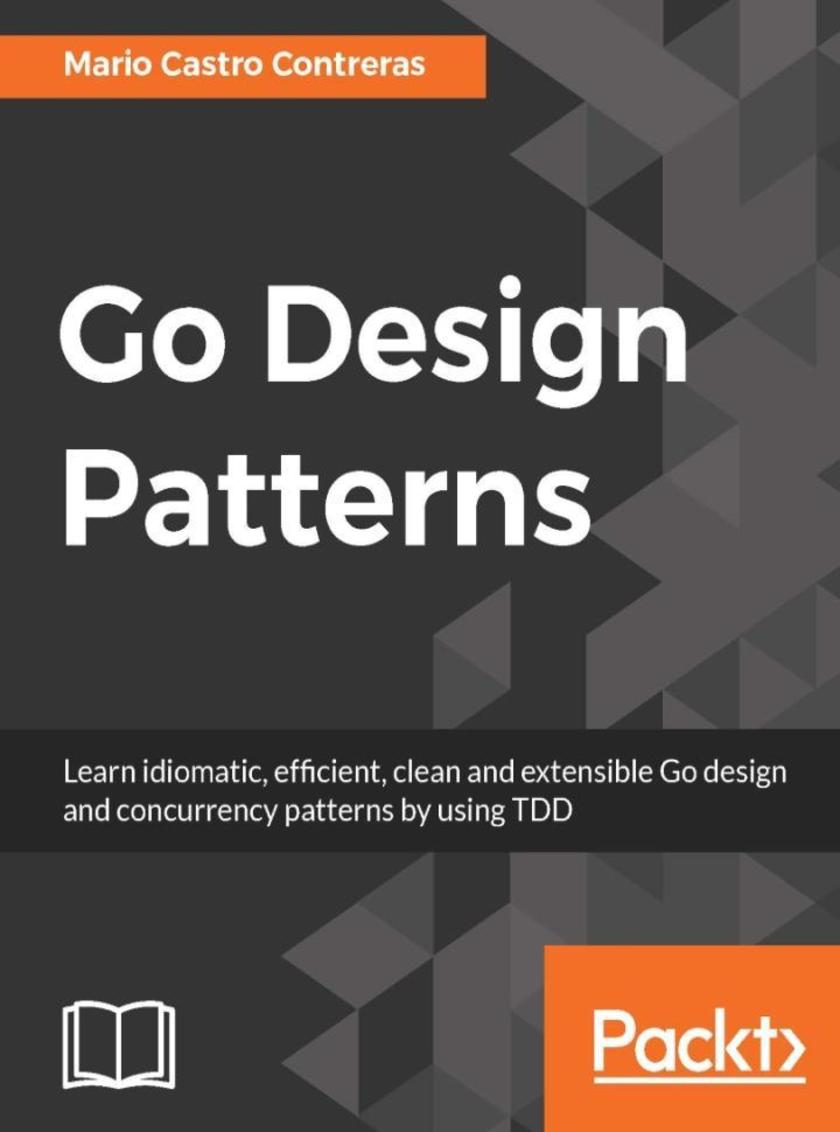
Go Design Patterns
¥90.46
Learn idiomatic, efficient, clean, and extensible Go design and concurrency patterns by using TDD About This Book A highly practical guide filled with numerous examples unleashing the power of design patterns with Go. Discover an introduction of the CSP concurrency model by explaining GoRoutines and channels. Get a full explanation, including comprehensive text and examples, of all known GoF design patterns in Go. Who This Book Is For The target audience is both beginner- and advanced-level developers in the Go programming language. No knowledge of design patterns is expected. What You Will Learn All basic syntax and tools needed to start coding in Go Encapsulate the creation of complex objects in an idiomatic way in Go Create unique instances that cannot be duplicated within a program Understand the importance of object encapsulation to provide clarity and maintainability Prepare cost-effective actions so that different parts of the program aren’t affected by expensive tasks Deal with channels and GoRoutines within the Go context to build concurrent application in Go in an idiomatic way In Detail Go is a multi-paradigm programming language that has built-in facilities to create concurrent applications. Design patterns allow developers to efficiently address common problems faced during developing applications. Go Design Patterns will provide readers with a reference point to software design patterns and CSP concurrency design patterns to help them build applications in a more idiomatic, robust, and convenient way in Go. The book starts with a brief introduction to Go programming essentials and quickly moves on to explain the idea behind the creation of design patterns and how they appeared in the 90’s as a common "language" between developers to solve common tasks in object-oriented programming languages. You will then learn how to apply the 23 Gang of Four (GoF) design patterns in Go and also learn about CSP concurrency patterns, the "killer feature" in Go that has helped Google develop software to maintain thousands of servers. With all of this the book will enable you to understand and apply design patterns in an idiomatic way that will produce concise, readable, and maintainable software. Style and approach This book will teach widely used design patterns and best practices with Go in a step-by-step manner. The code will have detailed examples, to allow programmers to apply design patterns in their day-to-day coding.
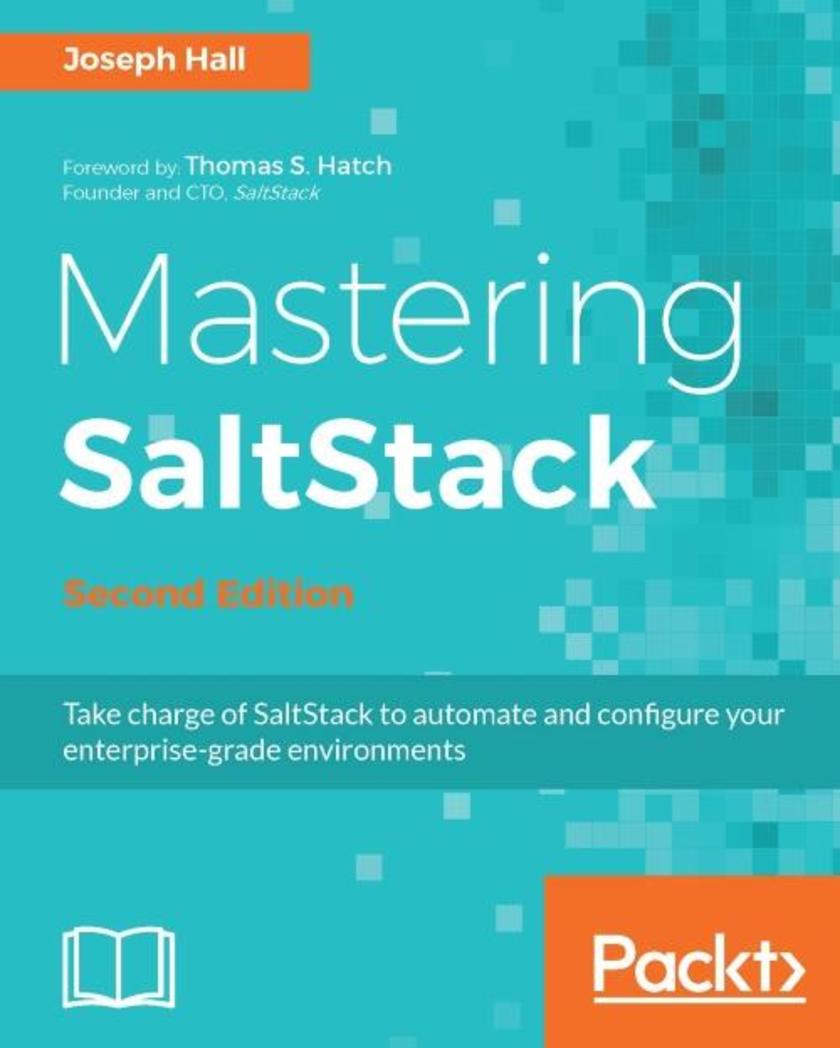
Mastering SaltStack - Second Edition
¥90.46
Take charge of SaltStack to automate and configure your enterprise-grade environments About This Book Automate tasks effectively and take charge of your infrastructure Effectively scale Salt to manage thousands of machines and tackle everyday problems Explore Salt’s inner workings and advance your knowledge of it Who This Book Is For This book is ideal for IT professionals and ops engineers who already manage groups of servers, but would like to expand their knowledge and gain expertise with SaltStack. This book explains the advanced features and concepts of Salt. A basic knowledge of Salt is required in order to get to grips with advanced Salt features. What You Will Learn Automate tasks effectively, so that your infrastructure can run itself Start building more complex concepts Master user-level internals Build scaling strategies Explore monitoring strategies Learn how to troubleshoot Salt and its subcomponents Explore best practices for Salt In Detail SaltStack is a powerful configuration management and automation suite designed to manage servers and tens of thousands of nodes. This book showcases Salt as a very powerful automation framework. We will review the fundamental concepts to get you in the right frame of mind, and then explore Salt in much greater depth. You will explore Salt SSH as a powerful tool and take Salt Cloud to the next level. Next, you’ll master using Salt services with ease in your infrastructure. You will discover methods and strategies to scale your infrastructure properly. You will also learn how to use Salt as a powerful monitoring tool. By the end of this book, you will have learned troubleshooting tips and best practices to make the entire process of using Salt pain-free and easy. Style and approach This book follows a step-by-step conversational tone. Topics are covered in detail through examples and a user-friendly approach.
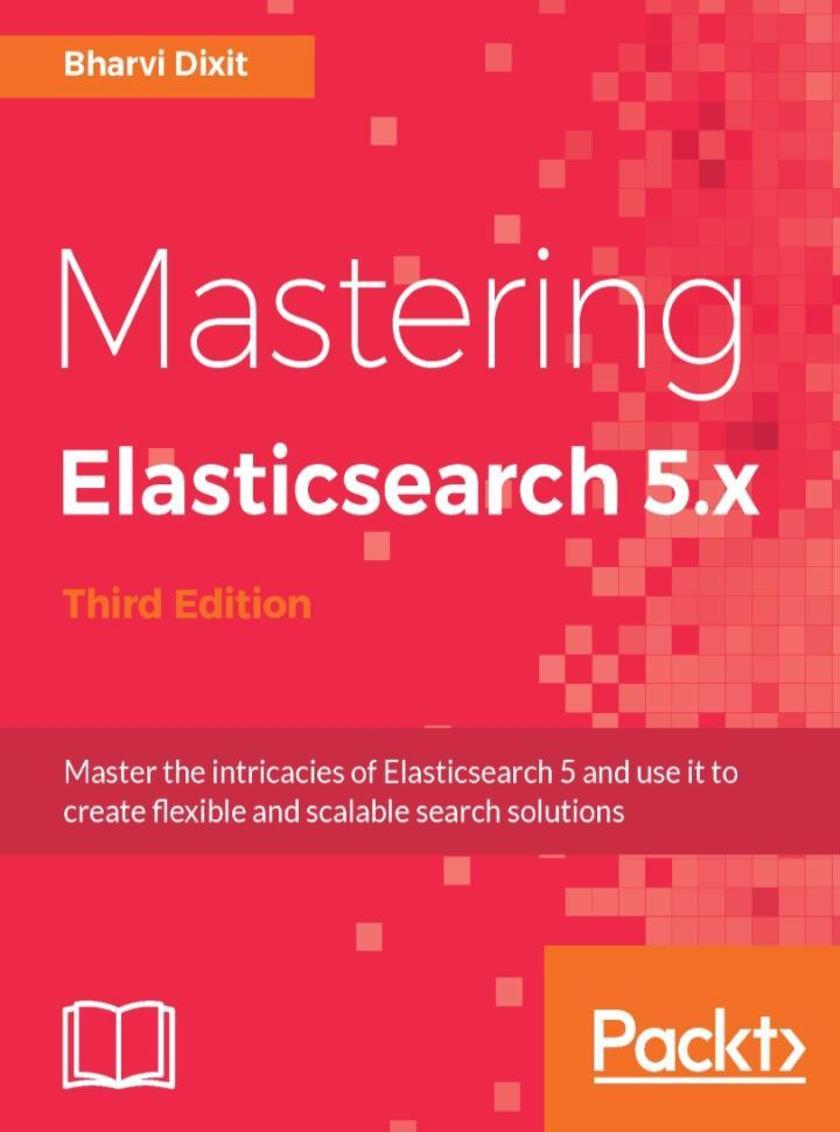
Mastering Elasticsearch 5.x - Third Edition
¥90.46
Master the intricacies of Elasticsearch 5 and use it to create flexible and scalable search solutions About This Book Master the searching, indexing, and aggregation features in ElasticSearch Improve users’ search experience with Elasticsearch’s functionalities and develop your own Elasticsearch plugins A comprehensive, step-by-step guide to master the intricacies of ElasticSearch with ease Who This Book Is For If you have some prior working experience with Elasticsearch and want to take your knowledge to the next level, this book will be the perfect resource for you.If you are a developer who wants to implement scalable search solutions with Elasticsearch, this book will also help you. Some basic knowledge of the query DSL and data indexing is required to make the best use of this book. What You Will Learn Understand Apache Lucene and Elasticsearch 5’s design and architecture Use and configure the new and improved default text scoring mechanism in Apache Lucene 6 Know how to overcome the pitfalls while handling relational data in Elasticsearch Learn about choosing the right queries according to the use cases and master the *ing module including new default *ing language, painlessly Explore the right way of scaling production clusters to improve the performance of Elasticsearch Master the searching, indexing, and aggregation features in Elasticsearch Develop your own Elasticsearch plugins to extend the functionalities of Elasticsearch In Detail Elasticsearch is a modern, fast, distributed, scalable, fault tolerant, and open source search and analytics engine. Elasticsearch leverages the capabilities of Apache Lucene, and provides a new level of control over how you can index and search even huge sets of data. This book will give you a brief recap of the basics and also introduce you to the new features of Elasticsearch 5. We will guide you through the intermediate and advanced functionalities of Elasticsearch, such as querying, indexing, searching, and modifying data. We’ll also explore advanced concepts, including aggregation, index control, sharding, replication, and clustering. We’ll show you the modules of monitoring and administration available in Elasticsearch, and will also cover backup and recovery. You will get an understanding of how you can scale your Elasticsearch cluster to contextualize it and improve its performance. We’ll also show you how you can create your own analysis plugin in Elasticsearch. By the end of the book, you will have all the knowledge necessary to master Elasticsearch and put it to efficient use. Style and approach This comprehensive guide covers intermediate and advanced concepts in Elasticsearch as well as their implementation. An easy-to-follow approach means you’ll be able to master even advanced querying, searching, and administration tasks with ease.
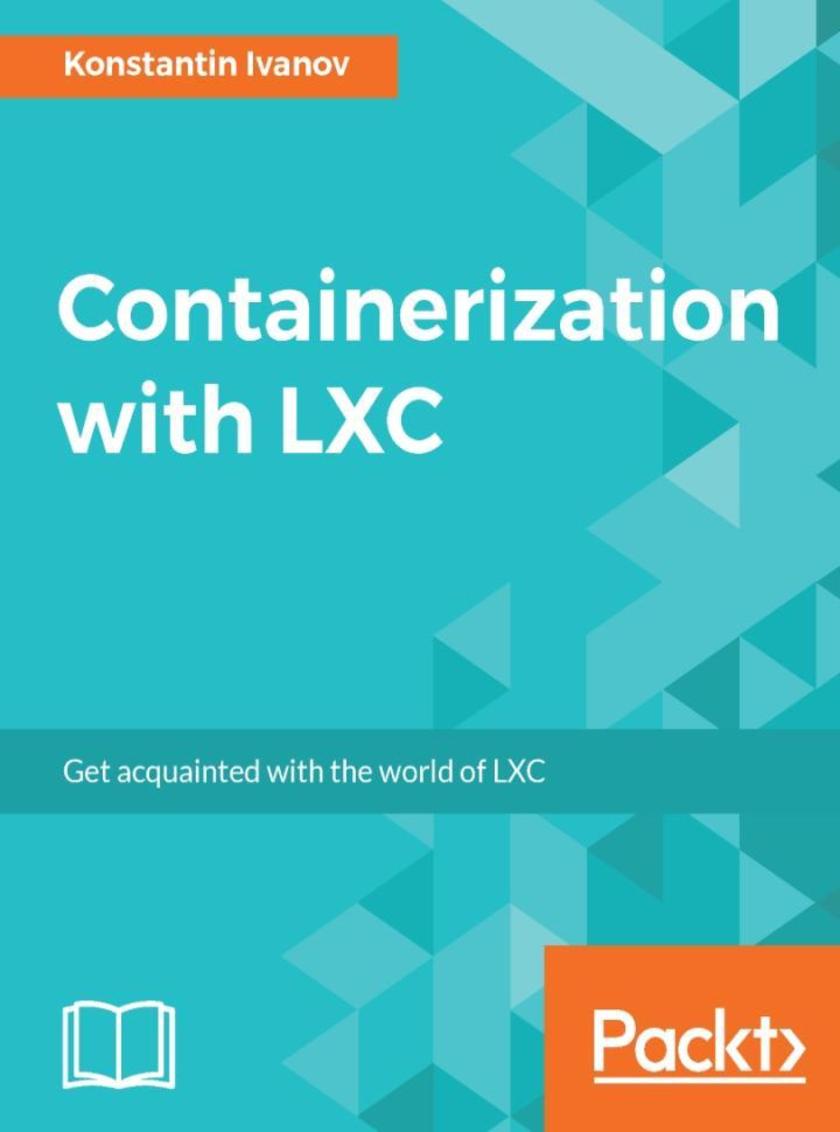
Containerization with LXC
¥90.46
Get acquainted with the world of LXC About This Book Get the most practical and up-to-date resource on LXC and take full advantage of what Linux containers can offer in the day-to-day operations of large-scale applications Learn how to deploy and administer various workloads such as web applications inside LXC Save your organization time and money by building robust and secure containers and by speeding the deployment process of your software Who This Book Is For This book is for Linux engineers and software developers who are looking to deploy applications in a fast, secure, and scalable way for use in testing and production. What You Will Learn Deep dive into the foundations of Linux containers with kernel namespaces and cgroups Install, configure, and administer Linux containers with LXC and libvirt Begin writing applications using Python libvirt bindings Take an in-depth look at container networking Set up monitoring and security with LXC Build and deploy a highly available application with LXC in the cloud In Detail In recent years, containers have gained wide adoption by businesses running a variety of application loads. This became possible largely due to the advent of kernel namespaces and better resource management with control groups (cgroups). Linux containers (LXC) are a direct implementation of those kernel features that provide operating system level virtualization without the overhead of a hypervisor layer. This book starts by introducing the foundational concepts behind the implementation of LXC, then moves into the practical aspects of installing and configuring LXC containers. Moving on, you will explore container networking, security, and backups. You will also learn how to deploy LXC with technologies like Open Stack and Vagrant. By the end of the book, you will have a solid grasp of how LXC is implemented and how to run production applications in a highly available and scalable way. Style and approach A practical guide that introduces the core technologies behind Linux containers and provides a deep dive into installation, configuration, and operations of LXC.
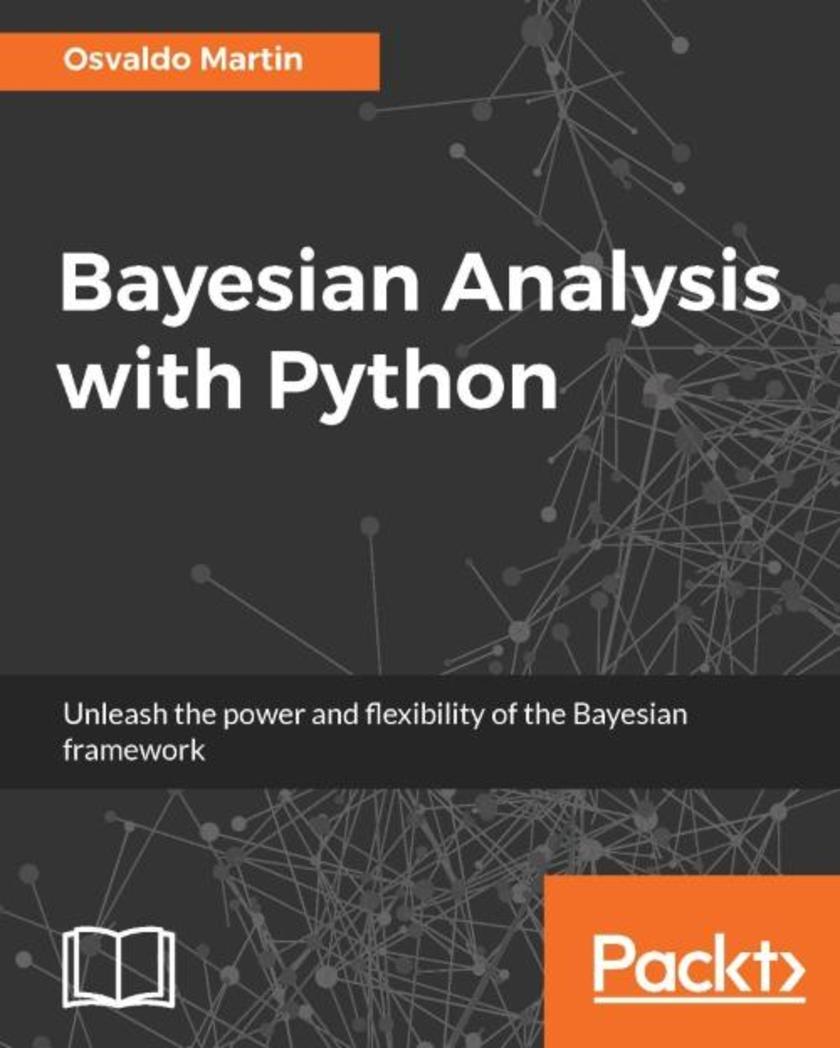
Bayesian Analysis with Python
¥90.46
Unleash the power and flexibility of the Bayesian framework About This Book Simplify the Bayes process for solving complex statistical problems using Python; Tutorial guide that will take the you through the journey of Bayesian analysis with the help of sample problems and practice exercises; Learn how and when to use Bayesian analysis in your applications with this guide. Who This Book Is For Students, researchers and data scientists who wish to learn Bayesian data analysis with Python and implement probabilistic models in their day to day projects. Programming experience with Python is essential. No previous statistical knowledge is assumed. What You Will Learn Understand the essentials Bayesian concepts from a practical point of view Learn how to build probabilistic models using the Python library PyMC3 Acquire the skills to sanity-check your models and modify them if necessary Add structure to your models and get the advantages of hierarchical models Find out how different models can be used to answer different data analysis questions When in doubt, learn to choose between alternative models. Predict continuous target outcomes using regression analysis or assign classes using logistic and softmax regression. Learn how to think probabilistically and unleash the power and flexibility of the Bayesian framework In Detail The purpose of this book is to teach the main concepts of Bayesian data analysis. We will learn how to effectively use PyMC3, a Python library for probabilistic programming, to perform Bayesian parameter estimation, to check models and validate them. This book begins presenting the key concepts of the Bayesian framework and the main advantages of this approach from a practical point of view. Moving on, we will explore the power and flexibility of generalized linear models and how to adapt them to a wide array of problems, including regression and classification. We will also look into mixture models and clustering data, and we will finish with advanced topics like non-parametrics models and Gaussian processes. With the help of Python and PyMC3 you will learn to implement, check and expand Bayesian models to solve data analysis problems. Style and approach Bayes algorithms are widely used in statistics, machine learning, artificial intelligence, and data mining. This will be a practical guide allowing the readers to use Bayesian methods for statistical modelling and analysis using Python.




 购物车
购物车 个人中心
个人中心



